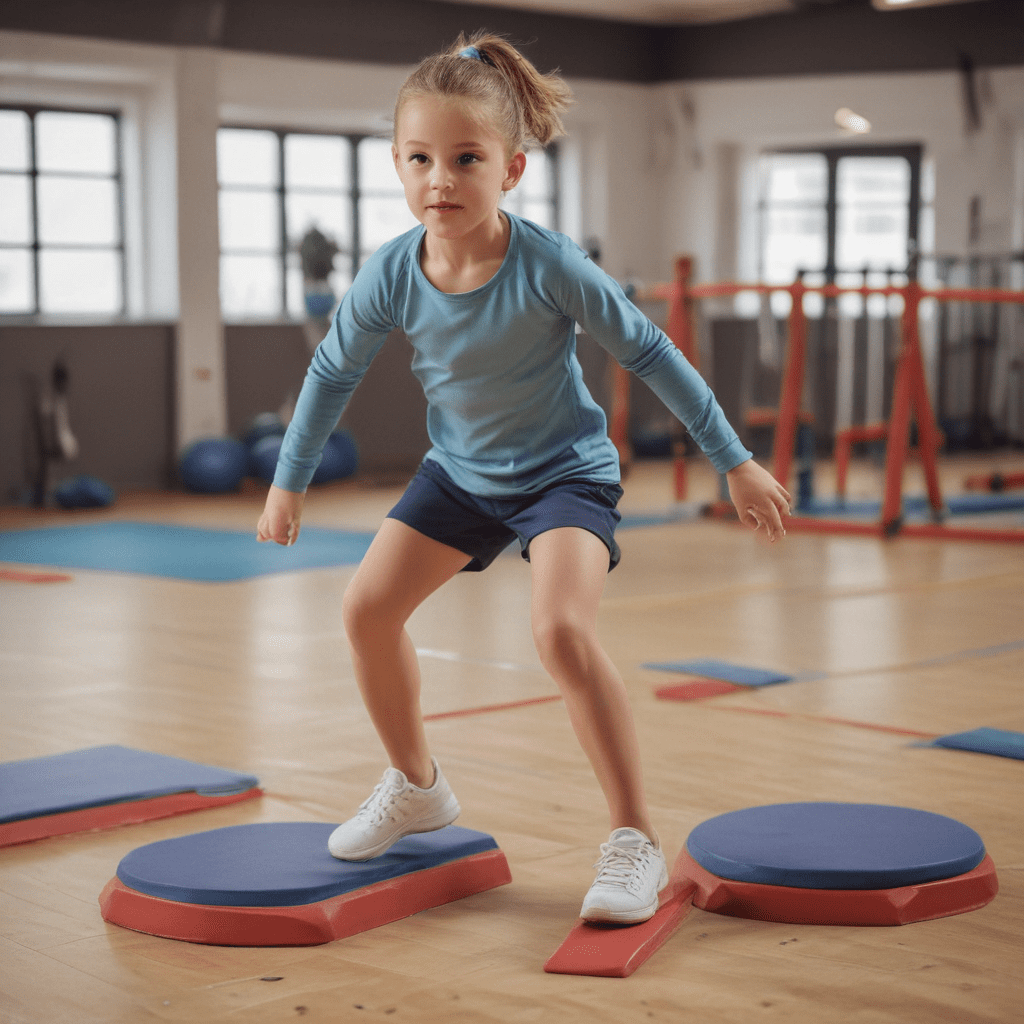
10 Agility and Coordination Exercises for Children
## 1. Cone Drills
Cone drills are a staple in agility training and can help children develop quick feet and coordination.
Instructions: Set up cones in a variety of patterns, such as a straight line, a zig-zag, or a circle. Have children run through the cones, changing direction and speed as needed.
Benefits: Cone drills improve footwork, agility, and coordination, and help children learn to control their bodies while in motion.
## 2. Ladder Drills
Ladder drills are another great way to improve agility and coordination.
Instructions: Place a ladder on the ground and have children perform a variety of drills, such as side shuffles, high knees, and crossovers.
Benefits: Ladder drills help children improve their footwork, coordination, and balance. They also help develop core strength and stability.
## 3. Obstacle Courses
Obstacle courses are a fun and challenging way to improve agility and coordination.
Instructions: Set up an obstacle course with a variety of obstacles, such as hurdles, tunnels, and balance beams. Have children navigate the course as quickly as possible.
Benefits: Obstacle courses improve agility, coordination, and balance. They also help develop problem-solving and decision-making skills.
## 4. Plyometric Exercises
Plyometric exercises are a type of exercise that involves jumping and explosive movements.
Instructions: Have children perform exercises such as box jumps, jump squats, and clapping push-ups.
Benefits: Plyometric exercises improve power, agility, and coordination. They also help develop core strength and stability.
## 5. Ball and Target Games
Ball and target games are a great way to improve coordination and hand-eye coordination.
Instructions: Have children play games such as catch, tag, and target practice.
Benefits: Ball and target games improve coordination, hand-eye coordination, and reaction time. They also help develop fine motor skills.
6. Coordination Games
Coordination games are another great way to improve agility and coordination.
Instructions: Have children play games such as Simon Says, musical chairs, and freeze dance.
Benefits: Coordination games improve coordination, balance, and the ability to follow instructions. They also help develop social skills.
7. Jumping and Hurdling Exercises
Jumping and hurdling exercises help improve agility, coordination, and power.
Instructions: Have children perform exercises such as jumping jacks, high jumps, and hurdles.
Benefits: Jumping and hurdling exercises improve agility, coordination, power, and endurance. They also help develop core strength and stability.
8. Reaction Drills
Reaction drills help improve the ability to react quickly to stimuli.
Instructions: Have children perform exercises such as sprinting in response to a visual or auditory cue, or catching a ball that is thrown at them.
Benefits: Reaction drills improve reaction time, speed, and agility. They also help develop decision-making skills.
9. Speed Drills
Speed drills help improve the ability to run quickly and efficiently.
Instructions: Have children perform exercises such as sprints, interval training, and hill workouts.
Benefits: Speed drills improve speed, agility, and endurance. They also help develop core strength and stability.
10. Balance and Proprioceptive Exercises
Balance and proprioceptive exercises help improve the ability to maintain balance and control body movements.
Instructions: Have children perform exercises such as standing on one leg, balancing on a wobble board, and performing yoga poses.
Benefits: Balance and proprioceptive exercises improve balance, coordination, and body awareness. They also help prevent injuries.
FAQs
How often should children exercise to improve agility and coordination? Children should exercise for at least 60 minutes each day, including activities that improve agility and coordination.
What are some signs that a child may need to improve their agility and coordination? Signs that a child may need to improve their agility and coordination include difficulty with sports, frequent falls, and clumsiness.
Is it important for children to have good agility and coordination? Yes, it is important for children to have good agility and coordination because it helps them to move efficiently, play sports, and avoid injuries.

